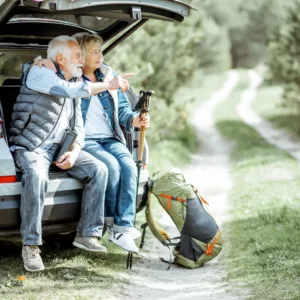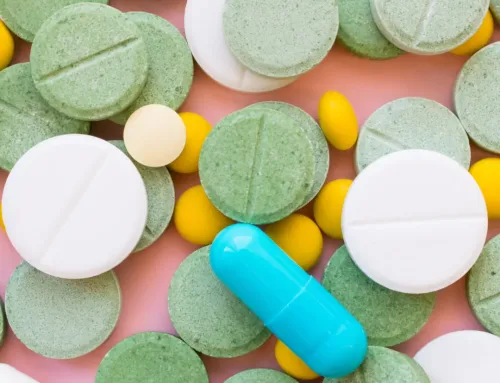Hearing Aid Feedback: Can You Fix It?
That irritating squeal or whistle you get from your devices goes by the name “hearing aid feedback.” Though it can disrupt your day, there’s often a solution at hand! This article explores the causes and remedies for feedback from hearing aids, guiding you toward better listening comfort. We tackle what causes this problem and outline steps to mitigate this common issue. Whether you’re experiencing feedback for the first time or seeking ongoing solutions, our insights aim to enhance your hearing aid experience. Let’s dive into understanding and addressing hearing aid feedback, ensuring your device performs at its best.
Understanding the Screech: What Causes Hearing Aid Feedback?
Comprehending the reasons behind the problem sheds light on the screech or whistle you might hear. Imagine sound waves caught in a loop, akin to a microphone placed too close to a speaker. This happens when a sound amplified by your hearing aid slips out and re-enters the microphone, creating a feedback loop. But what specifically triggers this feedback?
Feedback from hearing aids can arise from three main sources:
-
Acoustic Feedback:
Occurs when the amplified sound from the hearing aid’s speaker is captured again by its microphone. This is common if the hearing aid fits loosely or has significant wax buildup in the ear canal, allowing sound to leak and re-enter the microphone.
-
Mechanical Feedback:
Results from vibrations when the hearing aid speaker makes contact with the hearing aid’s casing, creating feedback.
-
Electronic Feedback:
This happens due to issues within the hearing aid’s electrical circuits, such as faulty wiring or malfunctioning components, leading to unwanted noise.
By understanding these triggers, you can better address and prevent the feedback from your hearing aid, enhancing your listening experience.

Pinpointing the Culprit: Common Causes of Feedback from Hearing Aid
Feedback from hearing aids can be both annoying and disruptive. Identifying the common causes is key to solving this issue. Here, we break down the types of feedback and their usual suspects.
Mechanical Feedback
This type of feedback arises from physical vibrations within the hearing aid:
- Loose Speaker: If the speaker (receiver) wobbles or touches the casing, it can generate feedback.
- Internal Damage: Broken or loose components inside the hearing aid can cause vibrations.
- Tubing Issues: For behind-the-ear (BTE) aids, tubing that rubs against objects can create feedback.
Acoustic Feedback
The most frequent feedback type involves sound leaking and re-entering the microphone:
- Improper Fit: Sound escapes through gaps around the earmold or shell.
- Earwax Blockage: Accumulated earwax reflects sound back into the microphone.
- High Volume: Excessive amplification increases the chance of sound leakage.
- Incorrect Programming: Certain settings may amplify frequencies that cause feedback.
- External Interference: Accessories like hats or masks might alter the aid’s fit, leading to leaks.
Electronic Feedback
Though less common, electronic feedback occurs due to internal issues:
- Manufacturing Defects: Faulty parts or wiring can create unwanted noise.
- Software Issues: Glitches or bugs in the hearing aid’s software may cause feedback.
- Moisture Damage: Exposure to water can harm internal components, leading to feedback.
If you encounter feedback from your hearing aid, especially if you suspect electronic feedback, consult your local hearing center. We possess the tools and knowledge to identify the issue and propose solutions, ensuring your hearing aid functions optimally.
Learn about what to look for in a hearing aid store.
Conquering Hearing Aid Feedback
Are you facing feedback from your hearing aid? Don’t worry! Modern solutions and technological advances now make it easier to address feedback issues. Here’s how to tackle it based on its type:
Mechanical Feedback Solutions
- Speaker and Casing Contact: A quick visit to your hearing center can resolve issues with the speaker or casing.
- Internal Component Issues: Your hearing specialist can diagnose and fix broken or loose parts.
- Tubing Adjustments: Reposition the tubing or use accessories to prevent friction and rubbing.
- Acoustic Feedback Remedies
- Refine the Fit: Professional refitting by an audiologist ensures a snug, leak-proof seal.
- Manage Earwax: Clean your hearing aids and ear canals regularly. Professional cleaning might be necessary for stubborn earwax.
- Volume Control: Reduce the volume to a level that doesn’t cause leakage, utilizing features like directional microphones for better sound clarity.
- Programming Adjustments: Work with your audiologist to fine-tune settings, reducing feedback while meeting your hearing needs.
- Consider External Factors: Adjust the fit of hats, scarves, or masks to minimize interference, exploring compatible hearing aid accessories.
Find out more about how to clean hearing aids for best performance.
Electronic Feedback Fixes
- Address Defects: For warranty-covered aids, contact the manufacturer. Otherwise, your audiologist can suggest repair options.
- Software Updates: Check with your hearing specialist for updates or fixes for software glitches.
- Water Damage: This may require a professional assessment to determine if repair or replacement is necessary.
- Additional Strategies
- Regular Maintenance: Keeping your hearing aids clean and checking in with your audiologist regularly can prevent many feedback issues.
Upgrading: A Solution for What Causes Hearing Aid Feedback
Upgrading to modern hearing aids can be a pivotal step in combating feedback issues. With advancements in digital processing, these devices have sophisticated feedback management systems that have greatly diminished the occurrence of feedback. Particularly for individuals with mild to moderate hearing loss, the latest hearing aids effectively minimize feedback when properly fitted and functioning. Features like Digital Signal Processing (DSP) allow these aids to analyze sounds entering the microphone and implement notch filtering or phase cancellation strategies. These techniques target and neutralize feedback frequencies, making feedback much less of a concern for users.
Securing the right solution and adjusting to overcome this issue requires patience and a collaborative effort with your hearing specialist.

Your Hearing Specialist: A Partner in Solving Feedback Issues
Need help with hearing aid feedback? Reach out to your hearing specialist. Here’s how they tackle feedback:
Mechanical Feedback Solutions
- Repairs and Replacements: For issues with loose or damaged speakers, casings, or components, your audiologist can fix or replace these parts.
- Tubing Adjustments: They might reposition it or recommend anti-friction accessories to prevent the tubing from creating vibrations.
Acoustic Feedback Fixes
- Professional Refitting: A snug fit is vital. Your hearing center can adjust earmolds for a tighter seal, reducing sound leakage.
- Earwax Removal: Hearing specialists are qualified to remove earwax buildup, ensuring it doesn’t block or reflect sound.
- Program Optimization: Adjusting the hearing aid’s settings can help minimize feedback without sacrificing clarity.
- Guidance on Usage: Your audiologist can advise on managing volumes and dealing with external factors like clothing that might cause feedback.
Addressing Electronic Feedback
- Software Updates: Updating your hearing aid’s software can resolve feedback-causing glitches.
- Manufacturer Coordination: Your hearing provider can liaise with the manufacturer to find a solution for warranty issues.
- Considering Replacement: A new hearing aid may be recommended if electronic feedback persists due to severe damage.
Additional Approaches
- Exploring Advanced Technology: Newer hearing aids feature sophisticated feedback cancellation that could significantly reduce issues.
- Experimentation: Finding the correct fix requires trial and error, guided by your provider’s expertise.
- Regular Checkups: Keeping up with appointments allows for ongoing adjustments and feedback prevention.
Open communication with your local hearing center is crucial. This partnership makes handling feedback manageable, ensuring your hearing aids perform at their best.

Embrace the Sound Solution: Enjoy Life without Feedback
Understanding what causes this problem and implementing solutions empowers you to enhance your listening experience. Consistent dialogue with your audiologist ensures your hearing aids perform optimally, letting you enjoy clear sound. In sum, addressing hearing aid feedback involves leveraging advanced technologies, ensuring a proper fit, and utilizing adaptive noise cancellation systems. These strategies significantly reduce or eliminate feedback, improving sound clarity and quality.
If you’re experiencing issues with feedback from your hearing aid, don’t hesitate to contact your local American Hearing + Audiology center. Our team is ready to help you solve any feedback problems, ensuring your hearing aids help you live life to the fullest. Contact American Hearing + Audiology today for help.






